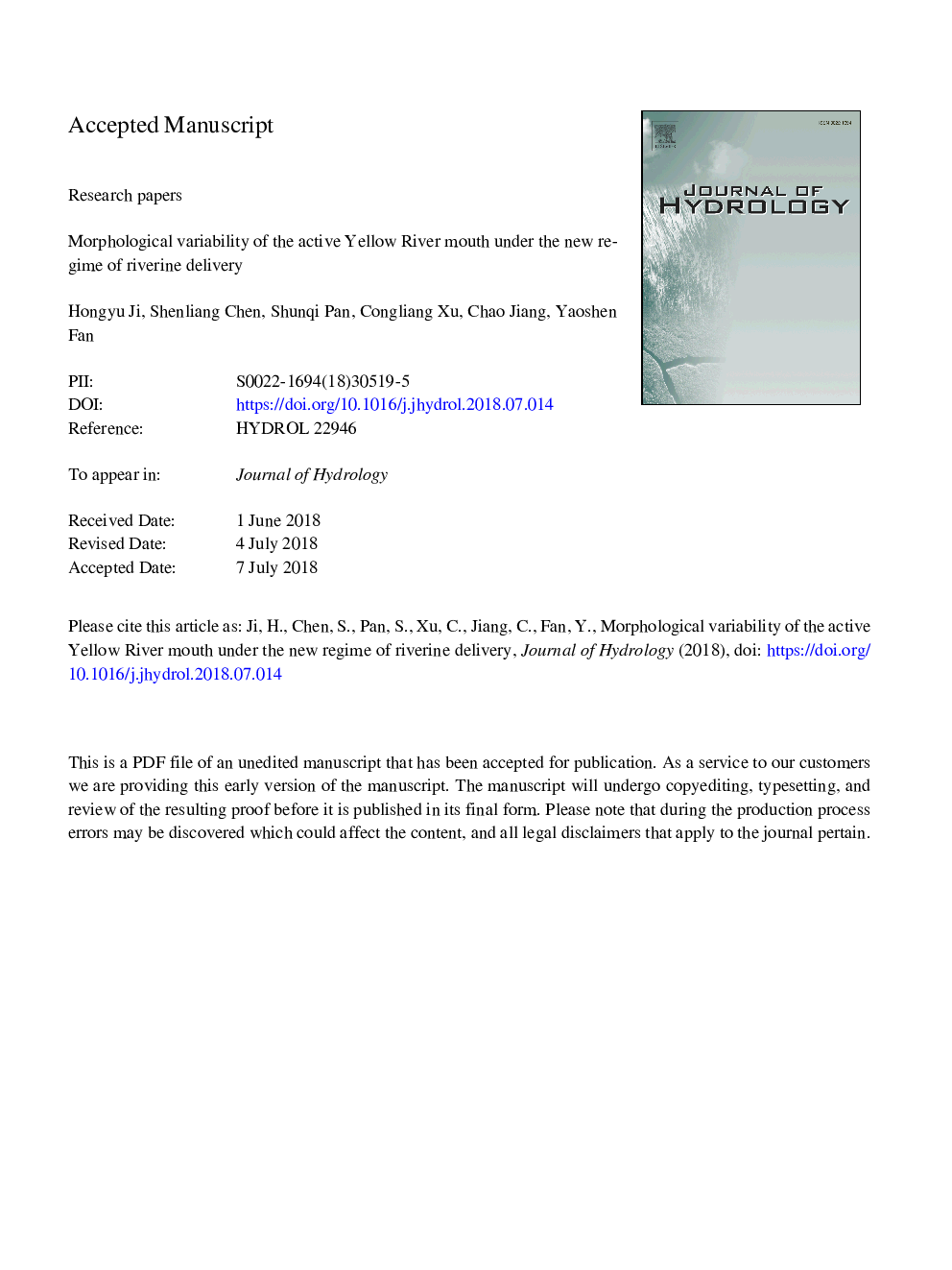| کد مقاله | کد نشریه | سال انتشار | مقاله انگلیسی | نسخه تمام متن |
|---|---|---|---|---|
| 8894476 | 1629890 | 2018 | 44 صفحه PDF | دانلود رایگان |
عنوان انگلیسی مقاله ISI
Morphological variability of the active Yellow River mouth under the new regime of riverine delivery
ترجمه فارسی عنوان
تنوع مورفولوژیکی دهانه رودخانه فعال زرد تحت رژیم جدید تحویل
دانلود مقاله + سفارش ترجمه
دانلود مقاله ISI انگلیسی
رایگان برای ایرانیان
موضوعات مرتبط
مهندسی و علوم پایه
علوم زمین و سیارات
فرآیندهای سطح زمین
چکیده انگلیسی
The Yellow River subaqueous delta (YRSD), once the most rapid depo-center among river deltas worldwide, has been under the risks of subsidence and degradation due to the new regime of riverine delivery affected by human interventions. Utilizing hydrologic and bathymetric surveying datasets, we examined the latest regime of river input from the perspective of water-sediment relationship, and the responding morphological evolutionary processes of active YRSD over a period of 20â¯years between 1996 and 2016. Results show that the new discharge regime is strongly interfered by the Water-Sediment Regulation Scheme (WSRS), characterized by a more drastic decline of sediment load than that of water discharge; more harmonious relationship between water and sediment discharges in the lower reach of the river to the sea; coarser sediment delivery and low suspended sediment concentration (SSC). We identified inverse erosion-accretion trends in the subaqueous region: net accretion of 0.15â¯m/yr in the active Yellow River mouth (AYRM) and severe erosion of â0.1â¯m/yr in the Gudong littoral zone (GDLZ). As the primary sink for sediment delivery, AYRM received approximately 68% of sediment delivery during the study period and sedimentation was mainly occurred in the shallower area where water depth was less than 10â¯m. In addition, recent morphological evolution of AYRM is found to have undergone through four stages, namely: moderate accretion (1996-2002), rapid accretion (2002-2007), reduced accretion (2007-2015) and rapid erosion (2015-2016). The new regime of riverine delivery presents multiple spatiotemporal scales in shaping deltaic morphology. Compared with the previous research, we present the morphological evolution of deltaic system over decadal timescale is strongly influenced by reduction of sediment supply derived from basin-scale human impacts, and the variability of subaqueous portion during the study period is closely related to inter-annual variability of river input. Besides, the building of AYRM is shaped by event-scale WSRS induced-floodwater, and decade-scale change of sediment pathway governed by frequent mouth channel migration. The results show, for the first time, that AYRM has experienced a significant erosion since the implementation of WSRS, with a decline of 99% sediment delivery in 2016 compared to the natural mode during 1950s. The results also indicate that to maintain the erosion-accretion balance of AYRM, an estimation of 41.4-62.3â¯Mt/yr sediment delivery should be kept. Due to the fluvial regime change from the natural to the highly human-regulated modes, the AYRM, as well as the whole YRSD, is expected to be transforming from the accretion to erosion states.
ناشر
Database: Elsevier - ScienceDirect (ساینس دایرکت)
Journal: Journal of Hydrology - Volume 564, September 2018, Pages 329-341
Journal: Journal of Hydrology - Volume 564, September 2018, Pages 329-341
نویسندگان
Hongyu Ji, Shenliang Chen, Shunqi Pan, Congliang Xu, Chao Jiang, Yaoshen Fan,
